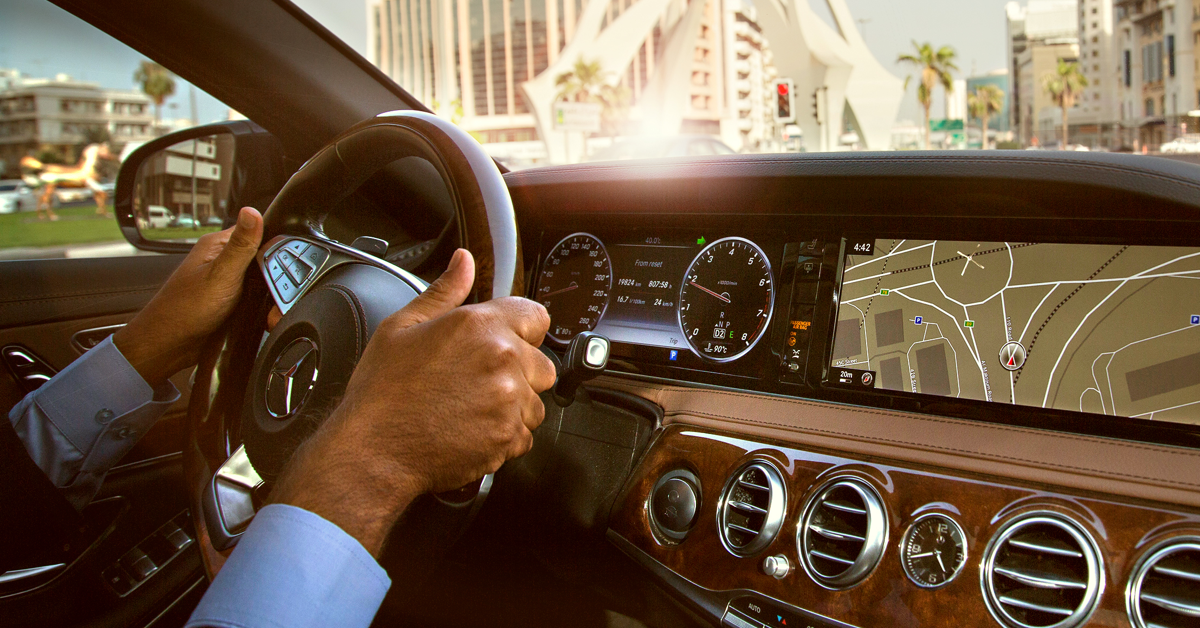We could all use a refresher sometimes. Here’s a reminder of some techniques to keep your driving smooth, and ensure you’re prepared for anything. Trust us, your passengers will feel the difference.

Braking
The fact that Anti-lock Braking Systems (ABS) are the standard these days means two things. One, it is a lot easier to control your vehicle when braking since the system prevents your wheels from locking in place. Two, that every action movie that features a recent-model vehicle screeching to a stop is lying to you.
In cars without ABS, holding the brakes will freeze your wheels in place, but the momentum of your vehicle still pushes it forward. This can make your wheels lose their grip on the road. To prevent this skidding and keep control over your vehicle, you would have had to pump the brakes. This gives your wheels little moments between the “freezing” to regain their grip. Luckily, ABS now does this for you automatically.
Although pumping the brakes isn’t necessary in a vehicle with ABS, progressive braking is always a good idea. It warns the driver behind you that they may have to slow down soon too, lowering the possibility of you getting rear-ended.
In an emergency, steer away from the hazard and slam the brakes, holding the pedal down until you’ve come to a full stop. You’ll know your ABS has kicked in when you feel your brake pedal pulse. Even once you’ve come to a complete stop, stay vigilant and watch the hazard and/or the other drivers before deciding your next course of action.
Above all, listen to your vehicle when it’s telling you something’s wrong. Keeping your braking system functioning as it should is of the utmost importance. If you notice any changes, take your vehicle in to refill the brake fluid before it turns into a bigger problem.
And it’s not just a safety issue, even though that is the most important reason. Knowing your brakes are in good shape will give you enough confidence to brake smoothly and keep you from making jerky stops.
Adapting to the weather
Even light rain can cause hydroplaning when it mixes with oil residue on the road, so it isn’t just extreme weather that drivers need to be prepared for. The first thing you should do before leaving for the day is check the weather report, so you know what to expect.
Knowing it could get tricky out there is only half the battle. Be sure to drive slower and increase your following distances so you’re giving yourself a greater opportunity to react. Remember, you’re not the only one dealing with these conditions, and the other drivers on the road might not be as well prepared. You should also get any braking or acceleration done before you head into a corner, so you’ll have more control over your steering.
Two terms to be aware of are understeering and oversteering. Understeer is when you turn the wheel, but your vehicle keeps moving in the same direction. Oversteer is when only your front wheels turn in the direction you steer, while your rear wheels continue in a straight line.
If you notice your vehicle understeering, instead of steering harder or braking, you’ll want to relax your steering a little. This might go against your natural instincts, but it will give your wheels a chance to regain traction. You should also stay off the brake. If your wheels are already sliding and not gripping the ground, forcing them to go still or turning harder away from the skid are not going to help you. Once you feel your wheels regain traction, then you can start slowing down and getting back on course.
You’re less likely to encounter oversteering, especially since your vehicle most likely has four-wheel drive. In case it does happen, the approach is much like dealing with understeer. Ease off the gas, bring your wheel back to a relaxed position until your wheels regain grip, then go back to steering in the direction you want to go. Of course, the best way to counteract oversteer is preventing it from happening at all. This can be done just by keeping your vehicle in good shape, particularly its suspension.
Unfortunately, good technique can’t solve every problem you’ll encounter on the road, but that doesn’t mean you can’t prepare for those situations too. Luckily, we’ve got another post for that: 9 emergency kit essentials everyone should have in their vehicle. With the right equipment and the right techniques, you’ll be able to deliver the best service in any conditions.


